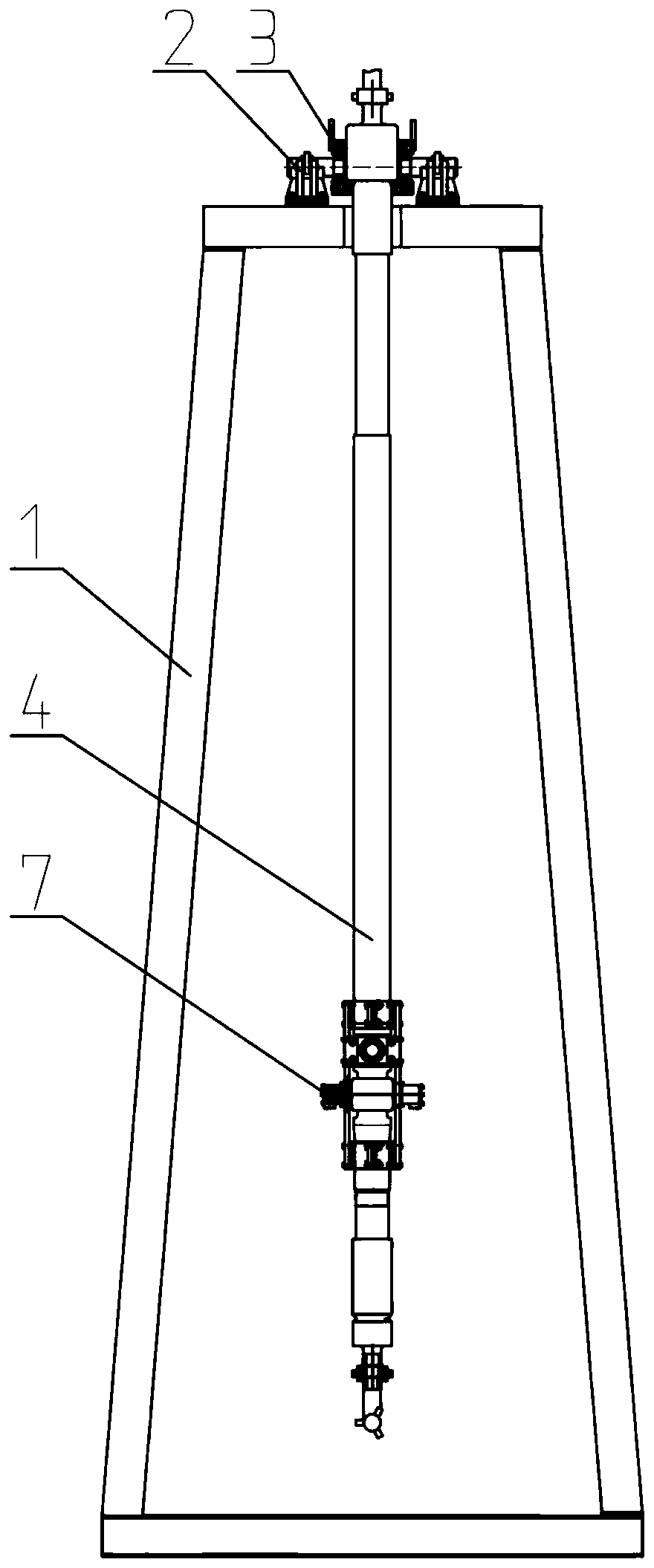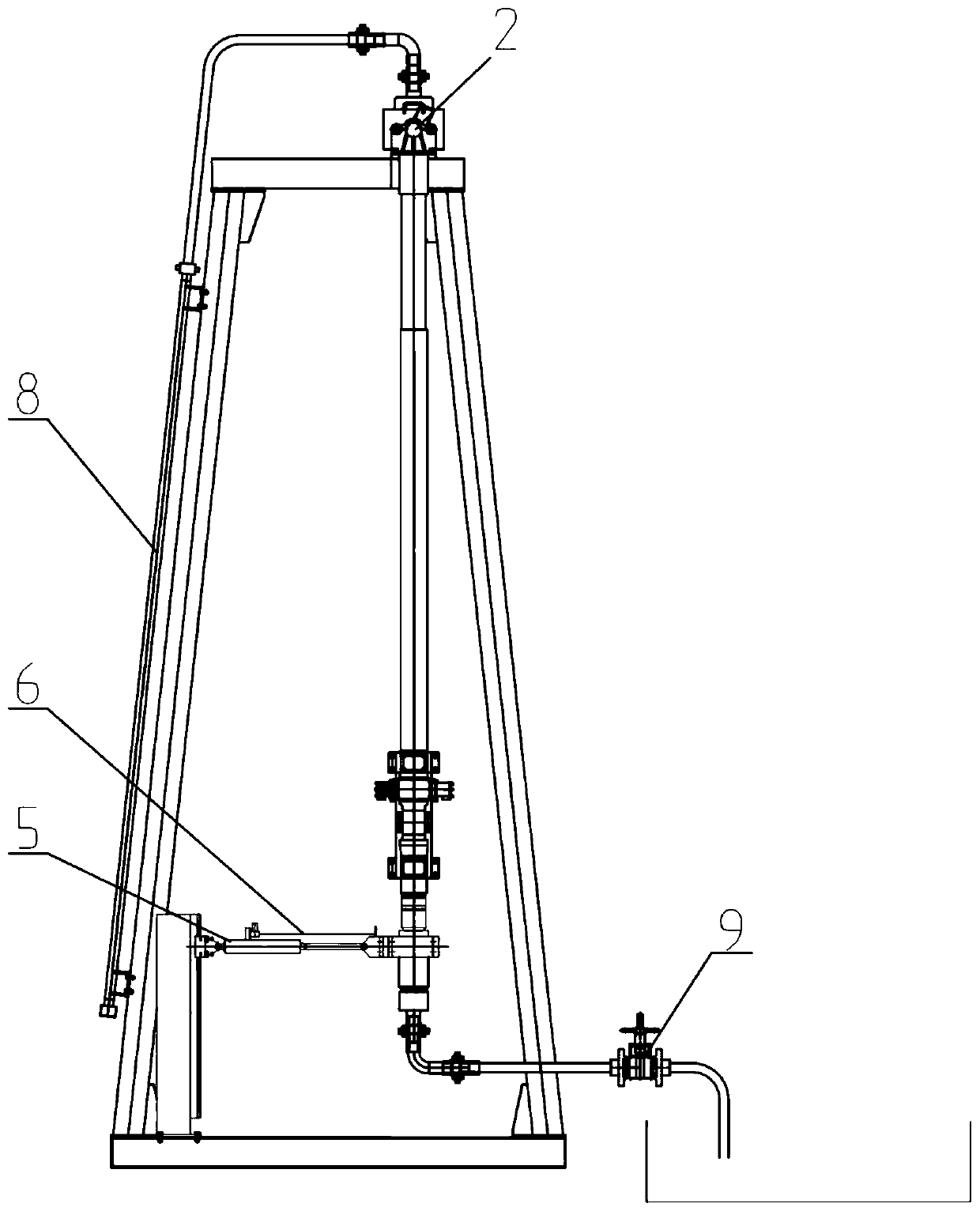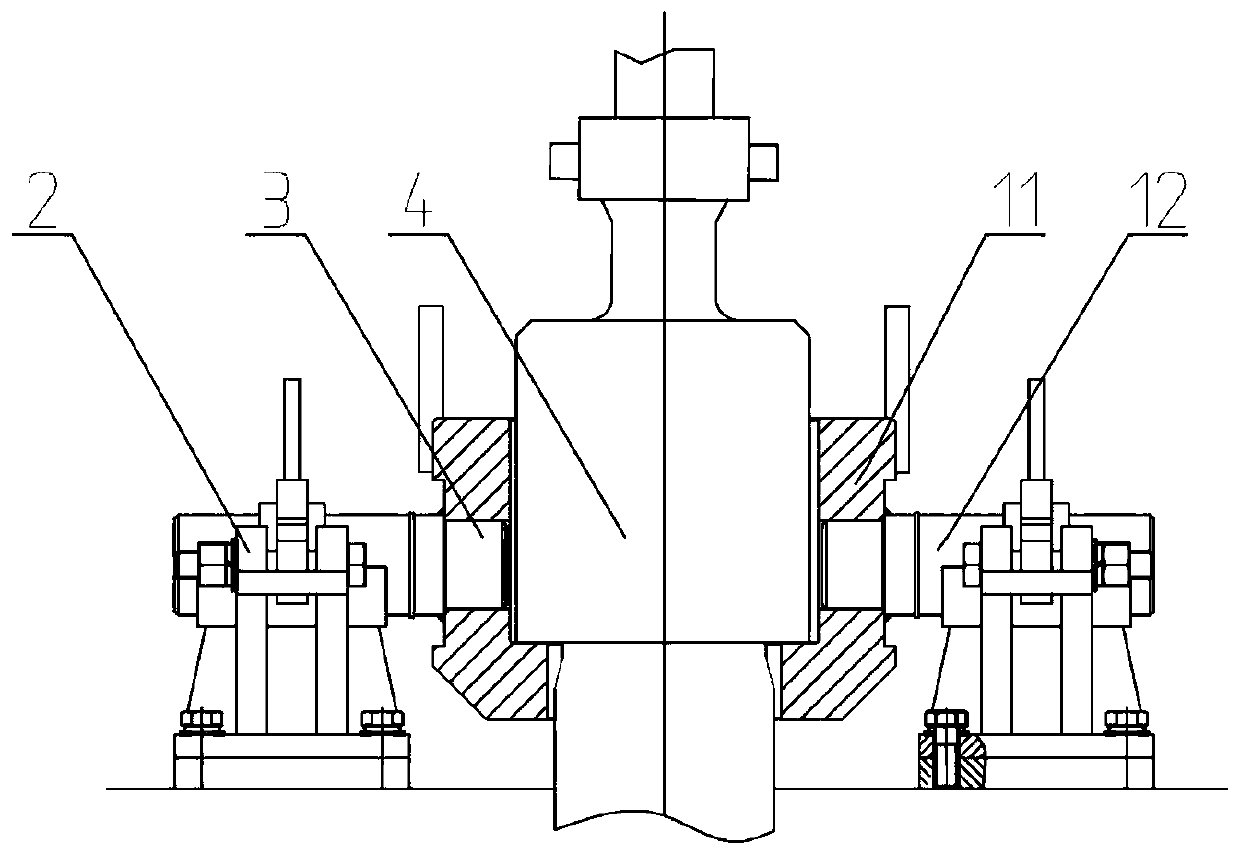Screw drilling tool, vertical drilling tool testing method and well inclination simulation testing equipment
A technology of testing equipment and testing methods, applied in directional drilling, testing of wellbore/well components, mechanical components, etc., can solve the problems of long cycle, high cost, and difficulty in measuring the deviation correction ability of well inclination angle tools, and achieves a reduction in height. requirements, accurate measurement, and the effect of improving work efficiency
- Summary
- Abstract
- Description
- Claims
- Application Information
AI Technical Summary
Problems solved by technology
Method used
Image
Examples
Embodiment Construction
[0058] Other objects and advantages of the present invention will become clear by explaining the following preferred embodiments of the present application.
[0059] figure 1 It is a front view of a simulated drilling deviation testing device of the present invention. figure 2 for figure 1 side view.
[0060] Such as figure 1 , figure 2 As shown, a simulated well deviation test equipment includes a main support 1 , a push-pull device 5 and an angle measurement device 6 . Wherein, the first end of the tool under test 4 is pinned to the main bracket 1 . One end of the push-pull device 5 is connected to the main support 1 , and the other end is connected to the measured tool 4 . The push-pull device 5 is used to push or pull the tested tool 4 to deflect the tested tool 4 . The angle measuring device 6 is connected with the tool under test 4 for measuring the offset distance of the second end of the tool under test 4 .
[0061] Specifically, the main support 1 is vertical,...
PUM
 Login to View More
Login to View More Abstract
Description
Claims
Application Information
 Login to View More
Login to View More - R&D
- Intellectual Property
- Life Sciences
- Materials
- Tech Scout
- Unparalleled Data Quality
- Higher Quality Content
- 60% Fewer Hallucinations
Browse by: Latest US Patents, China's latest patents, Technical Efficacy Thesaurus, Application Domain, Technology Topic, Popular Technical Reports.
© 2025 PatSnap. All rights reserved.Legal|Privacy policy|Modern Slavery Act Transparency Statement|Sitemap|About US| Contact US: help@patsnap.com



